TFB Review: Kahles K18i-2 - Maximum Field of View for Dynamic Shooting

In this review, we take a closer look at the new Kahles K18i-2 low power variable optic (LPVO), with a focus on practical shooting. Dynamic rifle shooting is a discipline that demands speed, precision, and adaptability. All at once, and under the pressure of getting the maximum out of yourself and your gear in as short a time as possible. Optics that don’t enhance your performance under these kinds of circumstances usually don’t stay on top competitors’ rifles for long.
Low Power Variable Optics @ TFB:
In 2022, I reviewed the Kahles K18i, and it’s now time for the Kahles K18i-2, where the design has been pushed even further. In fact, the Gen 2 was released already in 2023, and I’ve had mine for about a year. The headline change is a bigger tube, now 34mm compared to the original’s 30mm, and a noticeably larger ocular lens.
The previous K18i had a 45.5mm eyepiece; the K18i-2 jumps to 51.6mm, and I think this is where most of the magic happens. Internally, it’s also had a refresh with updated optics and mechanics, though those changes are harder to spot. In short, the impact from the upgrades is clear: a massively expanded field of view and a significantly more forgiving eyebox.
Eyebox and Speed
On 1x magnification, the K18i-2 offers a field of view just shy of 50 meters at 100 meters. That’s an upgrade from the 42.5m of its predecessor. On paper, that’s 7.5 meters of gain, but in practice, it’s even more valuable. I often see people on forums argue that the field of view isn’t important, but that’s totally wrong.
A wider FOV gives you better situational awareness, you can spot more “threats” or stage elements, and get a faster transition between targets, just to give an example. In dynamic shooting, where stage designs can go from super-tight to football-field-wide in seconds, this is very valuable.
In my opinion, a generous eyebox is one of the most underrated features in fast-paced shooting, and many cheap alternatives don’t perform that well. With the K18i-2, getting a full sight picture doesn’t require a perfect cheek weld, especially when the stage design gets you into awkward positions.
At higher magnification, a cramped eyebox will inevitably slow you down. The K18i-2 stays forgiving, letting you shoot from less-than-perfect positions without hunting for clarity. That matters when seconds (or tenths of a second) determine a stage winner.
The scope’s overall image quality is excellent: crisp, bright, and neutral in tone. In testing, we noticed some edge softness in high-contrast lighting, but nothing that impacted actual shooting or target ID.
If you want to learn Shooting On The Move from the best in the World, I highly recommend my interview series from the IPSC Rifle World Shoot 2024, where this question was asked and answered by the best.
Illumination and Reticle
Both generations of the K18i run something called Max Light, an extra-bright day/night illumination in the second focal plane for extreme backlight situations. Even in harsh backlighting, the center dot punches through. When everything else washes out, the aiming point is still visible. This is most likely the brightest illumination on the market, but I’m not sure that it’s as bright as the Gen 1. Unfortunately, I didn’t have both, so I can't compare.
The reticle is called 3GR, and features a center dot inside a classic Christmas tree. I’d say this allows for quick target acquisition and simple holds for elevation or wind. It’s clean, relatively uncluttered. I’m used to reticles with even less information, but I do like the 3GR.
And the fine details.
I never liked the so-called “IPSC reticle” (10661) with 3 single dots from Gen 1, and I must have been right, as it’s been removed and is no longer offered. For the Gen 2, the 3GR is your only choice, but it’s a good one. The center dot is small enough (1 MOA) to shoot steel accurately. My old Z6i has a dot that’s much larger.
The image below doesn’t do the Kahles any justice.
Controls and Ergonomics
Magnification changes are smooth and fast thanks to an integrated throw lever (removable). The windage and elevation turrets don’t need any tools and give tactile clicks (0.1 MIL per click). They’re not locking, but they’re not loose either.
I really would have liked a ballistic tower, and luckily, there is one! I haven’t used one, but the KAHLES ballistic turrets (BT) can be found here. Looks about right to me.
Kahles K18i-2 Technical Data
- Magnification: 1-8x
- Exit pupil: 0.31 - 0.11 in
- Eye relief: 3.74 in
- Field of view: 150.0 - 18.57 ft/100 yds
- Diopter compensation: +2 / -3 dpt
- Twilight factor (DIN 58388): 2.9 - 13.9
- Impact correction per click: .1 MRAD
- Adjustment range (E/W): 86.4 / 86.4 in/100 yds | 24.0 / 24.0 MILS | 82.5 / 82.5 MOA
- Parallax adjustment: 100 m
- Tube diameter: 34 mm / 1.34 in
- Length: 11.81 in
- Weight: 22.5 oz
- Focal plane: 2
- Illuminated: Yes
Are there any downsides?
The 34mm tube with more material, both in terms of tube and optics, adds weight in the wrong place - the top position. But personally, I’d rather have a great optic, which adds some weight, than slim the riflescope and take the consequences of poor optics.
On a more serious side. While the optics are nothing but world-class, I and a few fellow shooters have experienced that you need to adjust the ocular to really optimize the image quality when you go from targets close to further away, let’s say a switch from 30-50 meters to distances further away at 200-400 meters. You can still shoot, but you have to choose at what distance you want 100% crispness. In competition, there’s no time to adjust the ocular past the starting signal. I would think that the new ocular may be where the issue is, but for the sake of this review, I haven’t had the resources to take meetings with Kahles’ engineers and optical designers to ask the questions.
Finding a mount, most likely a cantilever, may also pose some issues. Or at least it did, until Spuhr could ramp up their production. I’m sure there are other manufacturers out there as well. The mount you see here is the Spuhr SP-4022, and it’s been flawless.
The price is eventually going to be a factor as well. There are a few riflescopes that are more expensive, but very few.
Final Thoughts
Looking into the Kahles K18i-2 is an optical dream. It’s mesmerizing, and to have access to 1x up to 8x power magnification in a small tube is nothing but a gift for competitors looking for a great riflescope. This is one of the best scopes in the dynamic rifle world, where people are looking for optical clarity and fast, intuitive handling. The bigger field of view and improved eyebox will surely translate directly into faster target acquisition and better hits, if you get your other parts (rifle, ammunition and yourself) together.
I shot PCC with a red dot during the PCC and Mini Rifle World Shoot 2025, but my friend earned a World Championship medal using the K18i-2, so I feel safe to say it works. While he struggled, his riflescope wasn’t one of his issues.
Pros:
- High-quality optics, superior to most
- Great field of view, the best on the market as far as I’m aware
- The Max Light illumination is market-leading
- Very forgiving eye box
Cons:
- While the optical quality is astonishingly good, I’m not a big fan of having to fine-tune the ocular for different distances, as described in more detail above
- The price in the U.S. is around $2,999
- A second-hand Swarovski or Kahles might be a better buy
Here’s a direct link to the Kahles K18i-2: https://www.kahles.at/us/sport/riflescopes/k18i-2_1-8x24i
We are committed to finding, researching, and recommending the best products. We earn commissions from purchases you make using the retail links in our product reviews. Learn more about how this works.

Ex-Arctic Ranger. Competitive practical shooter and hunter with a European focus. Always ready to increase my collection of modern semi-automatics, optics, thermals and suppressors. TCCC Certified. Occasionaly seen in a 6x6 Bug Out Vehicle, always with a big smile.
More by Eric B
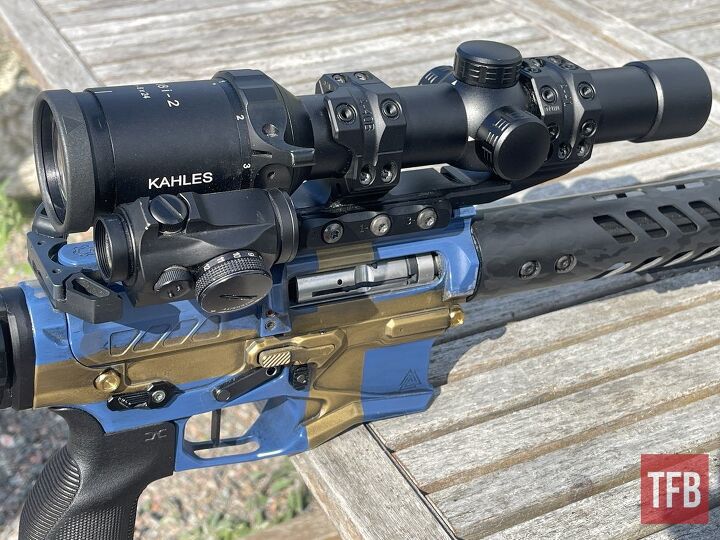
















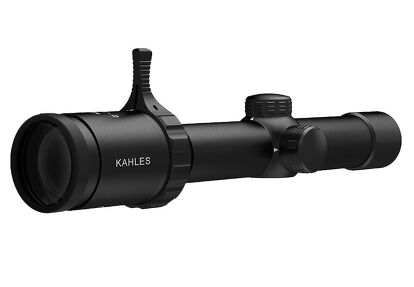

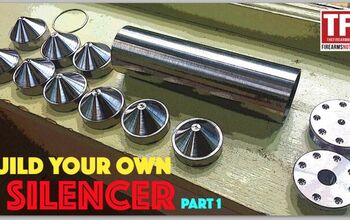



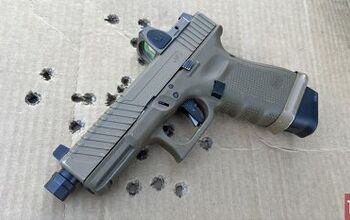


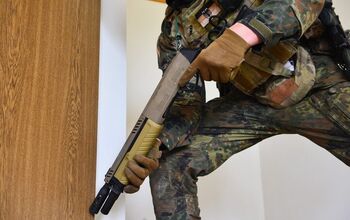
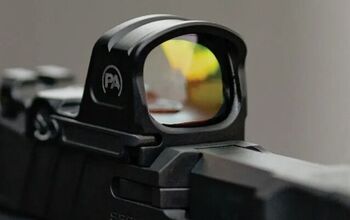






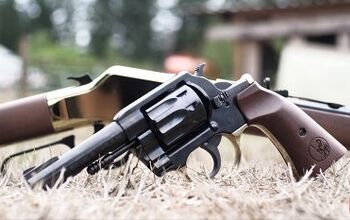

Comments
Join the conversation